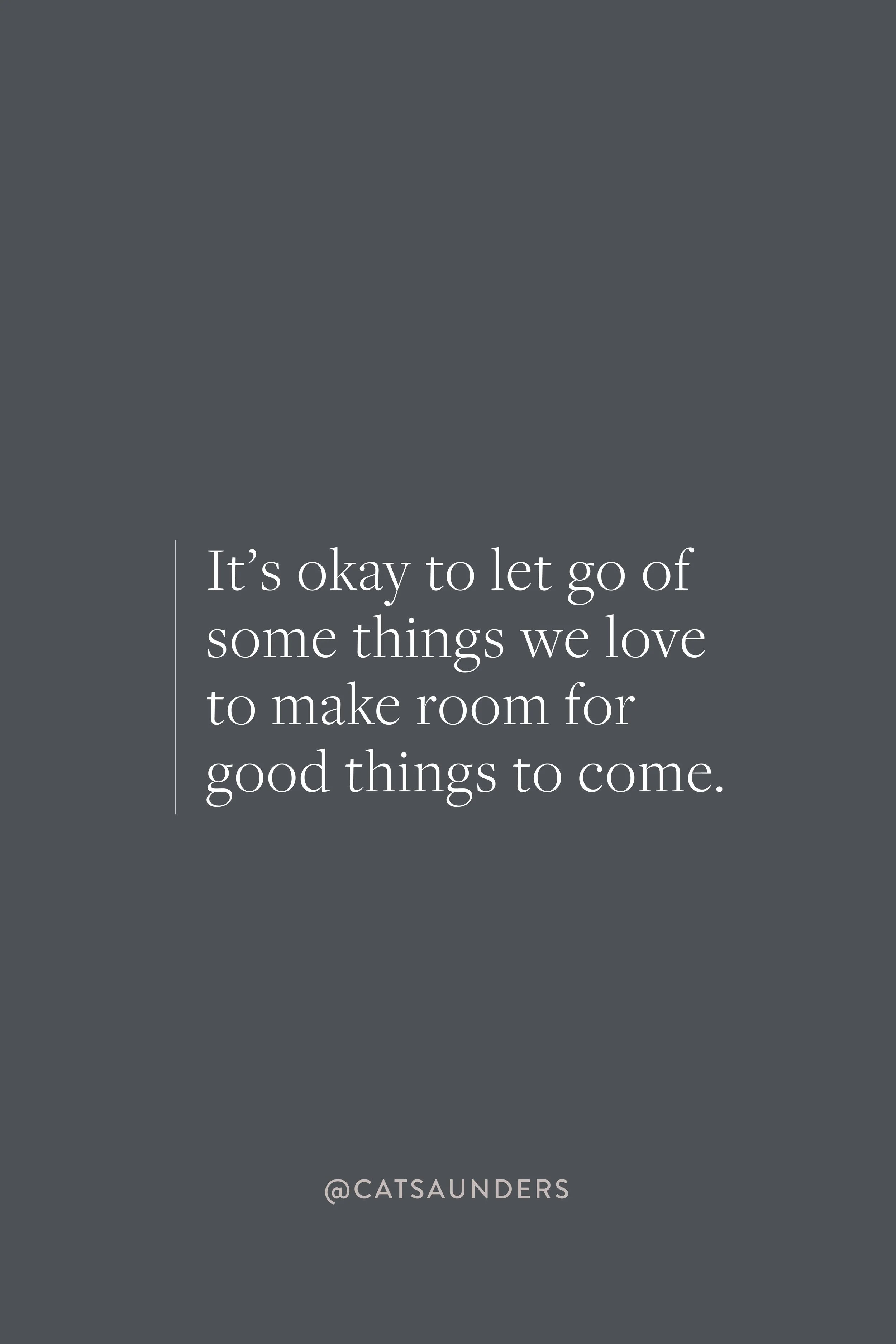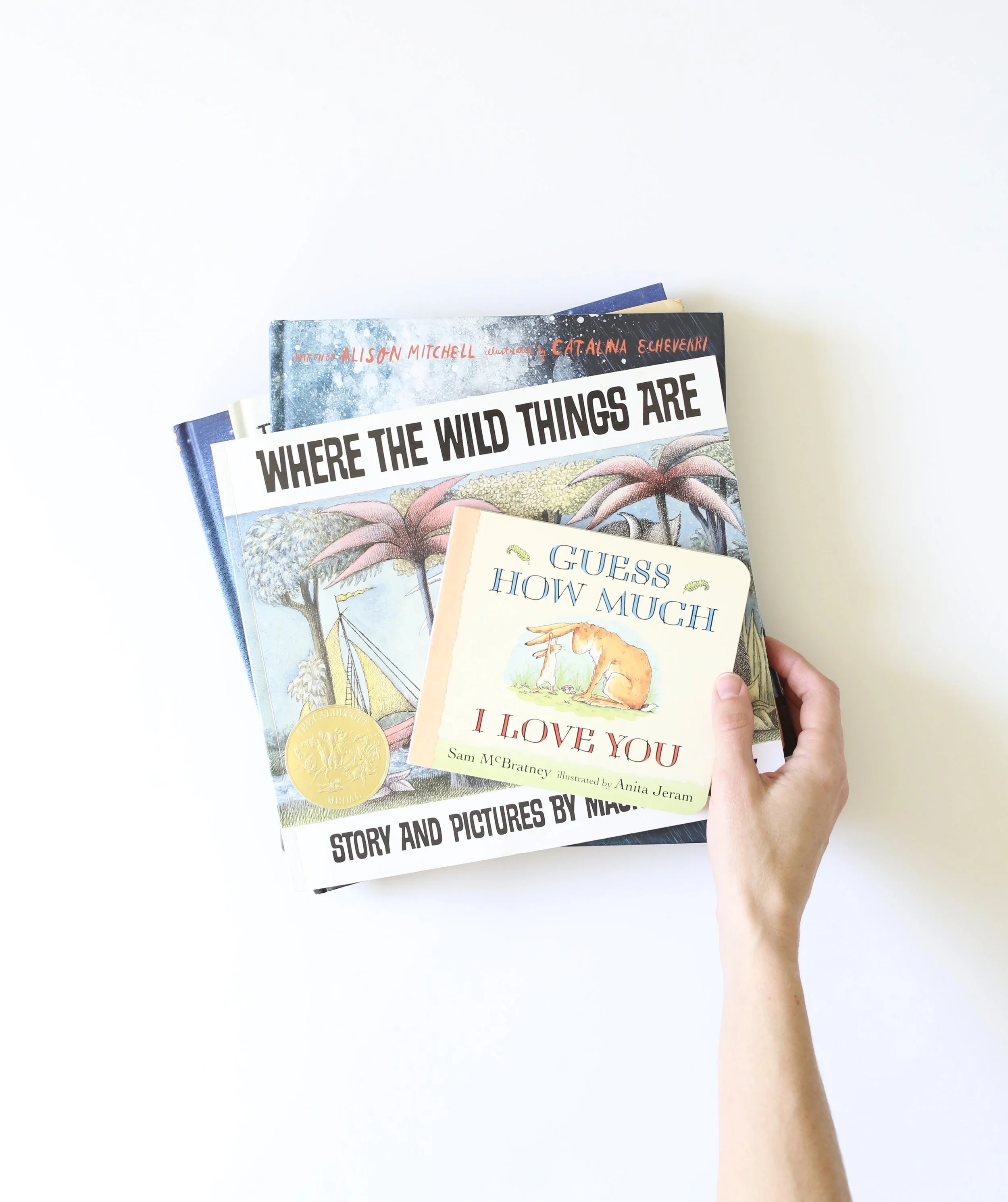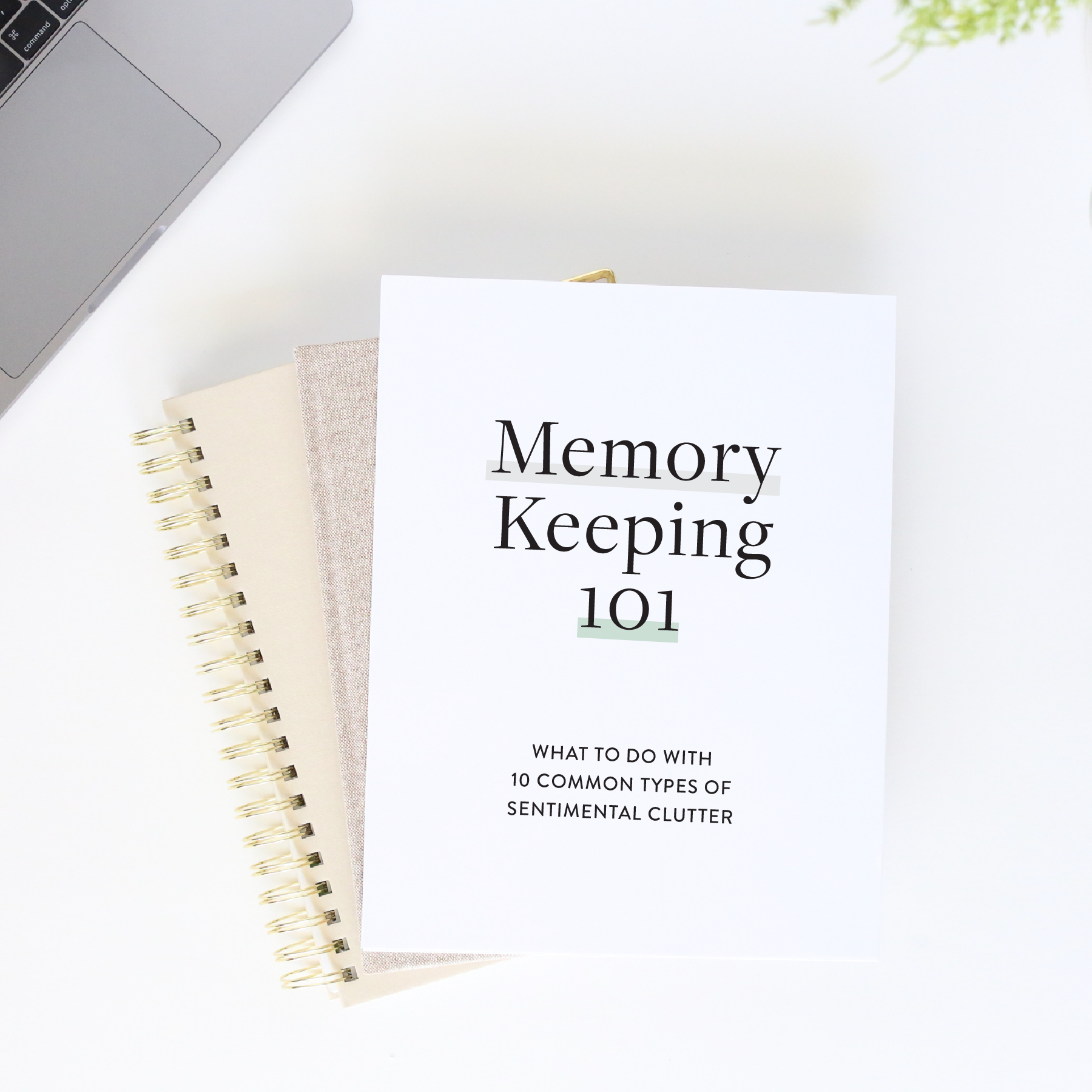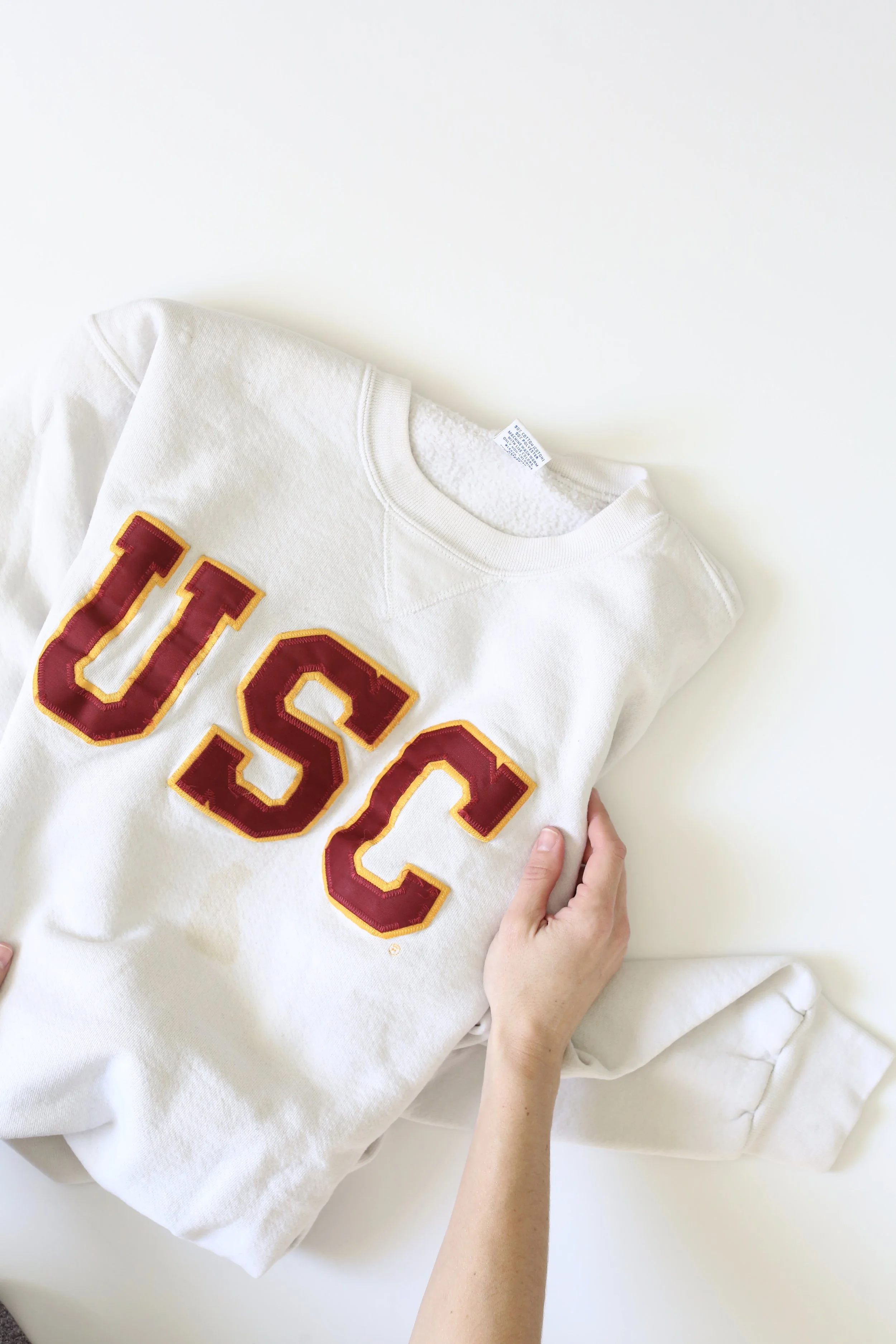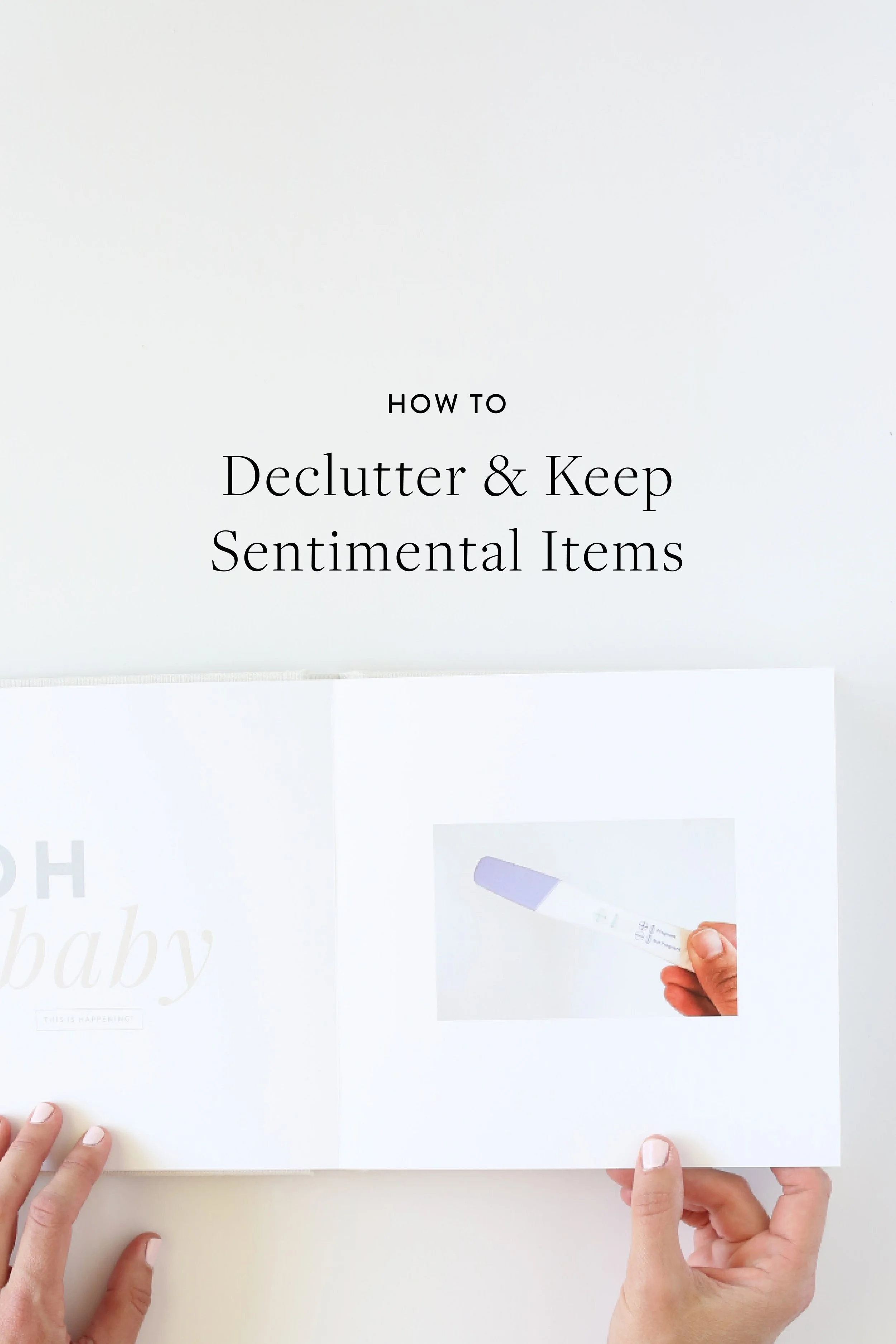How to Declutter Sentimental Items
I recently did some decluttering in preparation for our move across the country and I kept getting hung up on items we didn’t use or need that should have been easy to let go.
Things like books, board games, old picture frames, and the kids’ art projects carry emotional weight for me.
Marie Kondo calls these “sentimental items,” and she saves them for last in her 5-part decluttering journey because they can be so difficult to release.
Letting go of an item can feel like letting go of a memory, and the tension between wanting to own fewer things and wanting to hold onto memories can be paralyzing.
I knew it was time to deal with some of the clutter that had piled up around our house, but it wasn’t easy when it came to those particular things.
Here’s what helped me declutter some of our sentimental items.
Identify your ‘sentimental items’
I quickly realized that many unexpected items held up my decluttering operation, well beyond photos and cards. And those items aren’t universal, which can make them tricky to spot.
Learning to let the go starts with recognizing what’s sentimental and what’s not - for you.
My sentimental items
For example, children’s books tug at my heart strings. We have so many of them that we’re out of space, but they’re still hard for me to let go.
Even cookbooks I don’t really need or use carry sentimental value for me, making them difficult to give away.
And things like kids’ artwork, gifts we don’t use, and old picture frames felt odd to let go.
It wasn’t until I recognized that these were sentimental items (for me) that I could shift the way I thought about them, which made it easier to part with some of them.
Identify yours
Your list of sentimental items will likely differ from mine. For example, I don’t have a problem parting with coffee mugs, but they hold sentimental value for my husband, which greatly impacts how many we own (too many!).
That said, some of these other strategies have helped him pare down our collection - and helped me part with items that fall into the 'sentimental’ category for me.
I would start by recognizing what those things are for you, and then treat them accordingly.
Gather like items
When you come across an item or category that falls into the “sentimental” group for you, gather other items like it in one spot.
Work by item, not location
This is another tip I picked up from Marie Kondo, and it bears repeating. Rather than work on “the office” or “the kids’ room,” work on one item at a time.
For example, our office had lots of kids’ books in it, but not all of them. So I went through the house and pulled all of the kids’ books into the office and went through them one by one.
See items in context
It was easier to let go of some of the kids’ books because I could see then in context, right next to a huge pile of books we were keeping.
Had I just done that in the boys room or in the office, I would have resisted letting some of them go.
I needed to see them all in one place to reassure myself I wasn’t getting rid of “everything.”
Let go of duplicates
I keep a lot of school work through the year, but when it comes to sorting and culling it, I try not to keep a bunch of work that looks the same.
For example, when Ben was in second grade, he loved this “mad minute” math exercise. I ended up with about a dozen of these worksheets, so I kept one and let go of the rest.
Owen loves to color, so I try to just keep a few samples of his coloring from the year and let go of the rest.
For children’s books, stick to favorites or one from a category.
For example, we had a big Paw Patrol obsession in the house, but the boys have moved on. So I kept one Paw Patrol book and let go of the rest. Same for the “Fly Guy” books. I kept one or two and let go of the rest.
We often keep way more than we need to remind us of a moment in time or someone special. Resist the urge to keep everything by weeding out duplicates.
Assign space
I don’t know about you, but we’re limited by the space in our homes (and how much we’re allowed to move). Every item we keep takes up valuable real estate and moving weight.
I try to assign limited space for sentimental items, then resist the urge to fill it to the brim.
Books
Books carry a lot of sentimental value for me, but I can’t expand our bookcases.
Unless we want to dedicate more space (and moving weight) to books we don’t read anymore, I’ve got to let some of them go.
School work
I have one hanging file bin for the kids’ school work, so I let it pile up over time then discard the vast majority until I have a few items for each kid, for each year.
I don’t want to save 12 bins worth of school work. Just one per kiddo will do for our family.
Cards and small treasures
Likewise, each family member gets one archive box for items they want to keep.
Things like old printed photos, birthday cards, bulky artwork, and little trinkets and treasures go in these boxes.
Once they’re full, we declutter them so we don’t overflow.
Assigning a fixed amount of space helped me choose my favorites from groups of special items and let go of the rest.
Ready to tackle your sentimental clutter?
Be honest
It’s been helpful for me to be really honest about why I’m keeping (or want to keep) certain items.
Identity
Sometimes items become part of our identity, and we fear letting go of them will mean letting go of that piece of our story.
My old teaching materials remind me of my time in the classroom, and I worked so hard to put them together. But I haven’t touched them in 10 years. Do I really need to keep them? Or am I hanging onto them as a way to salvage that part of my identity?
All of those books, binders, papers, notes, and curricula take up valuable space in our home. I managed to let go of the vast majority of it, keep a few favorites, and honestly I feel lighter.
Guess what? Letting go of them didn’t take away my graduate degree or my teaching experience.
Guilt
Gifts aren’t your responsibility unless you want them.
I recently visited my cousin who has twin girls (toddlers!) and a one year old boy. Her son was an unexpected blessing, and the hand-me-downs came pouring in. She showed me boxes and bags full of clothes she doesn’t need, but she feels badly parting with them.
I encouraged her to use what works for her family and let go of the rest.
Gifts and hand-me-downs are nice, but not necessary to keep if you don’t need or use them.
Nostalgia
Sentimental items evoke feelings of nostalgia. They can sometimes make us a little sad or emotional because of a past experience or a person we lost. Baby items often fall into this category.
I have an old USC sweatshirt my Dad sent me when I was applying to graduate school.
It’s oversized, stained, and takes up valuable real estate in my sweater drawer.
But that old crewneck reminds me of my Dad - his unflinching support, sense of humor, and love for his alma mater.
While I couldn’t part with it quite yet, I did pull it out of my drawer and I’m going to have my Mom do something creative with it - maybe make a little pillow out of it for my office or add it to a t-shirt quilt she’s making for us with old graphic tees.
Nostalgia is a tough one, and it’s okay to hang onto some items that remind us of the past. It’s also okay to let them go, when you’re ready.
FINALLY
Be clear about you why.
Think about why decluttering these items matters to you.
For me, the answer is both practical (we have limited space and move frequently) and personal (clutter stresses me out!).
Rather than let our home become a shrine to the past, I want it give us room to welcome new things, new experiences, and new memories, as well as celebrate the past.
It’s okay to let go of some things we love to make room for what’s to come.
Don’t forget!
Grab your free guide.
Grab my free guide to memory keeping and learn my simple, minimalist approach to sentimental clutter.


